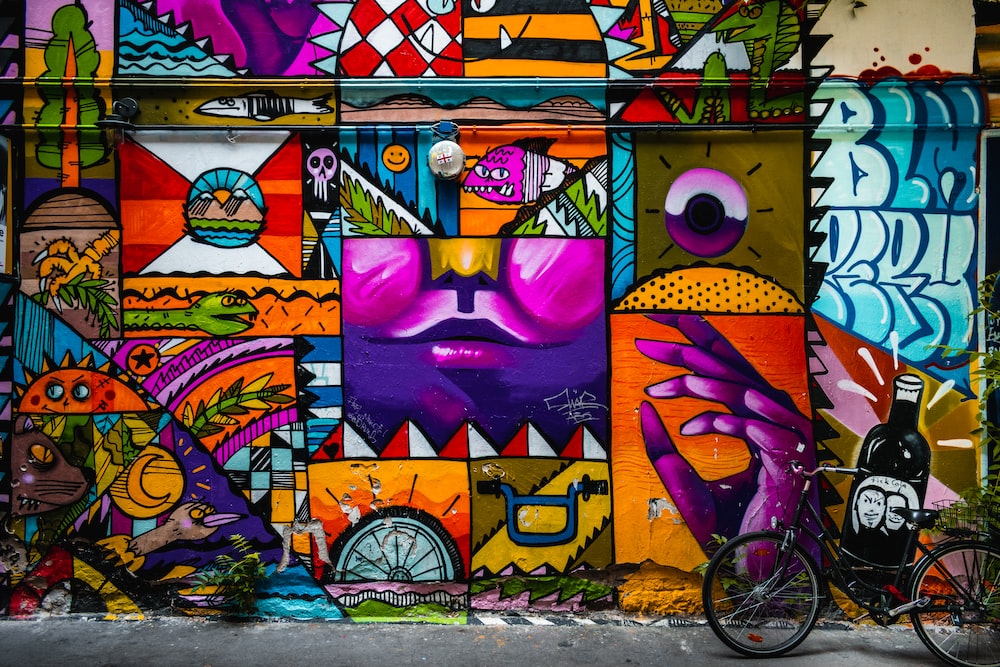Once confined to the alleys and underpasses of cities, street art has transformed from an underground subculture to a globally recognized and respected form of artistic expression. The journey of street art, from its graffiti roots to its place in mainstream culture, is a captivating story of creativity, rebellion, and innovation. In this blog post, we’ll take you on a tour of the evolution of street art, exploring its history, notable artists, and its impact on contemporary art.
The Birth of Graffiti: Street Art’s Humble Beginnings
The roots of street art can be traced back to the 1960s and 1970s when graffiti emerged as a form of expression in the streets of New York City. At the time, graffiti was often seen as a form of rebellion and a way for marginalized communities to claim their space in a rapidly changing urban environment. Graffiti artists, or “writers,” would use spray paint to create intricate and colorful tags on subway cars and buildings, often under the cover of darkness.
The Rise of Hip-Hop Culture
Graffiti was closely tied to the rise of hip-hop culture, which encompassed not only visual art but also music, dance, and fashion. Graffiti became a way for young people, particularly from African American and Latinx communities, to express themselves and push back against the challenges they faced.
Street Art Goes Global
As the 1980s rolled in, graffiti and street art began to spread beyond New York City and across the globe. Artists in cities like Los Angeles, London, and Paris embraced the medium, adding their unique styles and perspectives to the street art movement. Street art was no longer confined to subways; it was appearing on walls, bridges, and public spaces worldwide.
Notable Street Art Movements
1. Stencil Art
Stencil art gained popularity as artists like Banksy used this technique to create intricate and thought-provoking works. Stencils allowed for more detailed and precise imagery, making it easier for artists to convey messages and ideas.
2. Wheatpaste Posters
Wheatpaste posters involved creating art on paper and then adhering it to public surfaces using a mixture of wheatpaste and water. This method allowed for temporary installations and often featured political or social commentary.
Street Art’s Impact on Contemporary Art
Street art’s journey from the fringes to the mainstream art world is marked by several milestones:
1. Recognition in Galleries
Many street artists, including Banksy, Shepard Fairey, and Jean-Michel Basquiat, have transitioned from the streets to galleries, gaining recognition in the traditional art world. Their works are now sought after by collectors and displayed in prestigious art institutions.
2. Cultural Influence
Street art has had a profound impact on pop culture, fashion, and design. Its influence can be seen in advertising campaigns, music album covers, and even fashion collections. Street art’s vibrant and bold aesthetic has become a symbol of urban cool.
3. Social and Political Commentary
Street art continues to be a powerful platform for artists to comment on social and political issues. Murals and installations address topics such as inequality, racism, climate change, and more, sparking important conversations in public spaces.
Conclusion
The evolution of street art from its graffiti origins to its mainstream acceptance is a testament to the enduring power of creativity and self-expression. Today, street art is celebrated for its ability to transform public spaces, challenge norms, and inspire change. It serves as a reminder that art knows no boundaries and can thrive in the unlikeliest of places.
As you explore the world of street art, take time to appreciate the journey it has taken and the artists who have contributed to its growth. Street art is not just about paint on walls; it’s about the stories, ideas, and emotions it conveys. Whether you encounter it in a bustling city or in a gallery, street art invites you to see the world through a different lens, one where the streets themselves become a canvas for creativity and expression.

